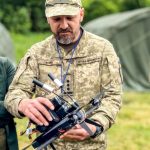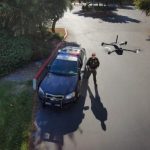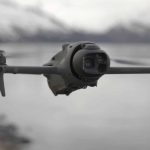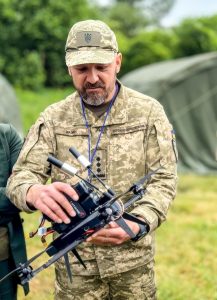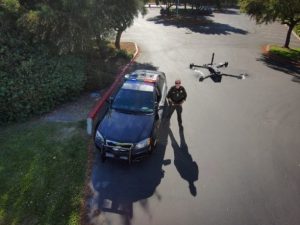Drone Used in Foiled ISIS Attack on U.S. Military Base Raises Security Concerns
A 19-year-old former Michigan Army National Guard member, Ammar Abdulmajid-Mohamed Said, was apprehended on May 13, 2025, for orchestrating a mass shooting at a U.S. military facility in Warren, Michigan. He planned to use a drone for reconnaissance purposes, as detailed in a press release from the Justice Department. This incident underlines significant issues pertaining to the misuse of drones and underscores the necessity for enhanced counter-drone security measures at military sites.
The Role of Drones in the Attack Plan
Said reportedly operated his drone over the U.S. Army’s Tank-Automotive & Armaments Command (TACOM) facility located at the Detroit Arsenal to collect critical operational intelligence for the impending attack. The drone facilitated aerial surveillance to identify access points and target structures, showcasing how consumer-grade drones can potentially be wielded for terrorist operations. On the scheduled day of the attack, Said deployed the drone near TACOM, resulting in his swift arrest by the FBI’s Joint Terrorism Task Force.
Technical Implications for Drone Security
The employment of a drone in this attack plot emphasizes existing vulnerabilities within airspace security around sensitive military locations. Consumer drones, typically outfitted with high-definition cameras and capable of reaching altitudes of up to 400 feet, can circumvent conventional perimeter defenses. This case highlights the urgent demand for sophisticated counter-drone technologies such as radar detection and radio-frequency jamming systems to neutralize unauthorized unmanned aerial vehicles (UAVs). Current FAA regulations, including a 400-foot altitude ceiling for recreational drones and designated no-fly zones around military bases, were evidently inadequate in preventing Said’s actions, indicating a need for stricter enforcement and real-time monitoring.
Impacts on Industry and Regulation
The drone industry is likely to face heightened scrutiny following this event, which exemplifies the potential for UAVs to be implicated in criminal activities. Manufacturers might be compelled to incorporate geofencing software to restrict drone access to sensitive airspaces, particularly the three-mile radius surrounding military facilities such as TACOM. Regulatory entities, including the FAA, may also advocate for enforced remote identification systems, allowing law enforcement to monitor drone operators in real-time. Brig. Gen. Rhett R. Cox, commanding general of Army Counterintelligence Command, stated, “The arrest of this former soldier is a sobering reminder of our counterintelligence efforts to identify and disrupt threats against our nation,” underscoring the necessity for constant vigilance.
Operational and Economic Considerations
This occurrence could usher in stricter regulations governing UAS operations, potentially restricting access to airspace around critical infrastructures for both professionals and recreational drone users. Compliance costs for commercial entities may rise as they might need to invest in advanced technology or certifications. Economically, the counter-drone sector, valued at $1.8 billion in 2024, is anticipated to expand as governmental bodies prioritize airspace safety. Nevertheless, recreational users may face increased entry barriers such as mandated licensing requirements, which could have an adverse effect on the hobbyist segment.
Broader Security Lessons
The averted attack, disrupted through the diligent work of undercover agents and the FBI, accentuates the evolving risk posed by insider threats and drone-facilitated terrorism. Sue J. Bai, head of the Justice Department’s National Security Division, noted, “This individual is charged with plotting a deadly assault on a U.S. military base at home for ISIS,” recognizing the proactive actions taken by law enforcement. This case serves as a critical reminder for military installations to enhance their drone detection systems and for the drone community to promote responsible practices to avert future misuse.
With Said facing a potential sentence of up to 40 years in prison if convicted, this case starkly illustrates the dual-use nature of drone technology and the pressing need for effective safeguards to protect national security.

Photos courtesy of Justice Department / US Military
